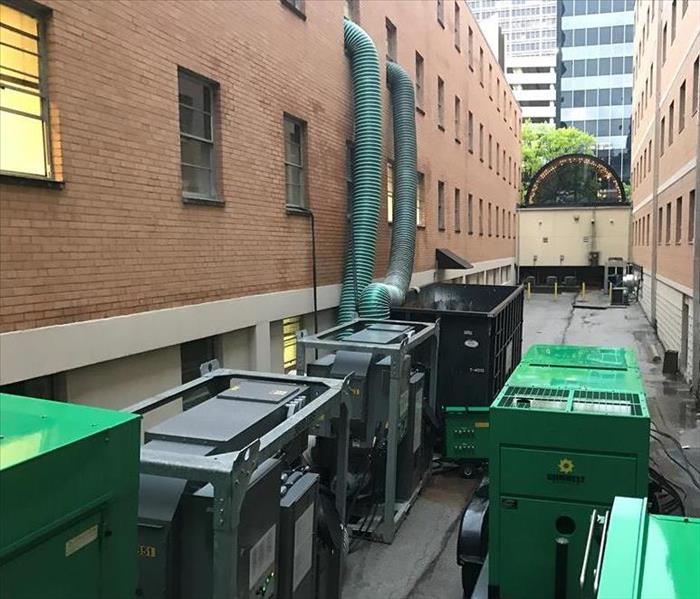Desiccant Dehumidifiers
3/28/2019 (Permalink)
Desiccant Dehumidifiers utilize chemical attraction instead of condensation to remove water from the air. Because they do not use condensation, they are not limited by low dew point temperatures, and when used properly, they produce the lowest vapor pressure of any dehumidifier. Portable desiccant dehumidifiers work best in cool and/or dry environments. The cooler and drier the air going into the desiccant, the drier the air will be coming out.
Desiccants are commonly used to dry dense materials (hardwood floors and plaster walls) due to the large vapor pressure differentials they can create between the surface and the air, Desiccants excel at large loss drying, because they can be made in virtually any size.
Desiccants do not collect water in a pan for automatic pump-out. Instead, they produce damp reactivation air, which must be vented outside the structure using temporary ducting. This venting often results in a pressure differential in the drying environment. The dry "processed air" is ducted into the affected area.
Desiccant dehumidifiers range in size and configuration dramatically. Desiccants used in restorative drying can be as small as a roll-on suitcase or as large as two semi tractor-trailers. Large desiccants are often self-contained dehumidification systems, utilizing onboard generators and running on propane or diesel fuel. When large catastrophic events occur, such as hurricanes or flooding, large desiccants can provide a means of dehumidification when little or no power is available.




 24/7 Emergency Service
24/7 Emergency Service